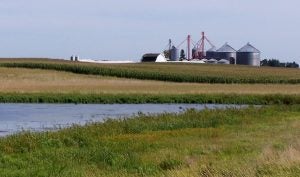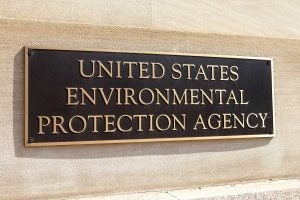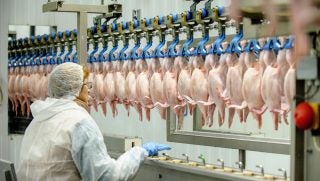The battle over the future of atrazine is heating up. Both the U.S. Environmental Protection Agency and the Triazine Network fired shots this month in letters exchanged between the pair. While the EPA’s letter came off as dismissive and flippant, the Triazine Network clearly signaled it’s not going anywhere.
Context is required to fully appreciate the moment. So what is this all about?
For more than 60 years atrazine has been an important crop-protection tool for farmers across the United States. It’s a herbicide commonly used on corn, sorghum, and sugar cane farms, though there are also limited uses for residential lawns and golf courses. Farmers can apply it both before the crop sprouts and after to fight weeds, particularly broadleaf and grassy weeds.
Atrazine is regulated by the EPA under the Federal Fungicide, Insecticide, and Rodenticide Act. The EPA reviews a pesticide’s registration about every 15 years. But it’s always reviewing new data and information on a regular basis — what the EPA refers to as dynamic.
There’s a number of different assessments and metrics the agency uses to adjust how, when, and where atrazine can be used. The one ruffling TN’s feathers is the EPA’s evaluation of the herbicide under the Atrazine Ecological Exposure Monitoring Program. The stated goal of the program is to monitor atrazine levels in watersheds exposed to runoff, such as high-use areas and small streams. The program includes 33 watersheds in nine states.

The Concentration Equivalent Level of Concern (CE-LOC) is the key metric. It measures the 60-day average concentration of atrazine in aquatic environments. The goal is to keep levels below a threshold so that the herbicide doesn’t cause significant changes in aquatic plant community structure, function, and productivity. Zones can be decommissioned — or released from the measuring program — if the watershed regularly measures below that number for two years. In fact, all sugar cane areas were decommissioned as of 2013.
Where the CE-LOC is set is where the controversy starts.
In March, the Triazine Network wrote a letter to EPA Administrator Michael S. Regan. As I explained in a previous article, the Triazine Network understood that the EPA planned to reduce the CE-LOC from 15 ppb as a 60-day average to just 3.4 ppb as a 60-day average. The Triazine Network — a group of industry stakeholders including the National Corn Growers Association — believed the proposal wasn’t supported by scientific research and data. It contradicted the agency’s publications of 2019 and 2020. And such a drastic change would negatively impact growers across the country.
In early June, the EPA fired out a response. It pegged the current 15 ppb average as simply a “policy decision” by the previous administration, and claimed the 3.4 ppb was always the “scientific” number. The agency also addressed the criticism that the decision was unsupported by proper scientific evidence by claiming a change in the studies it found reliable. EPA confirmed it planned to propose the 3.4 ppb, and encouraged the Triazine Network to engage in the process.

The Triazine Network’s reply didn’t mince words. It accuses the EPA of employing revisionist history, disregarding any sense of transparency, and rejecting a robust body of evidence supporting the 15 ppb. It also points out that atrazine is an important tool used in no-till and conservation tillage, both of which reduce greenhouse-gas emissions. And it promises to substantively respond to the EPA’s proposal once it’s presented.
This truly feels like we’re setting a dangerous precedent. If the Triazine Network is correct — and I’m inclined to believe it is — the EPA is opening these types of evaluation to the whims of politics. The current agency doesn’t like what the previous agency did under a prior administration with a different political persuasion. But it’s untenable that safety and risk assessments could change every time a new political party controls the White House.
That’s why it’s so important that these decisions are based on peer-reviewed research. We want to use crop-protection tools in a way that is effective, efficient, and environmentally sound. But these federal agencies must rise above politics or their actions will completely undermine the entire regulatory framework. And right now, that’s exactly where the EPA is headed.
It’s not a little issue either. The consequences could have far-ranging effects on our food supply. Once the EPA proposes this change, I hope it will engage in an honest, robust, and well-supported assessment based on stakeholder comments.
Amanda Zaluckyj blogs under the name The Farmer’s Daughter USA. Her goal is to promote farmers and tackle the misinformation swirling around the U.S. food industry.



